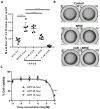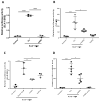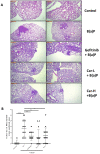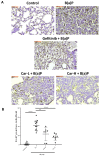The β-Blocker Carvedilol Prevents Benzo(a)pyrene-Induced Lung Toxicity, Inflammation and Carcinogenesis
- PMID: 36765542
- PMCID: PMC9913110
- DOI: 10.3390/cancers15030583
The β-Blocker Carvedilol Prevents Benzo(a)pyrene-Induced Lung Toxicity, Inflammation and Carcinogenesis
Abstract
The current study evaluated the effects of the β-blocker carvedilol on benzo(a)pyrene (B(a)P) and its active metabolite benzo(a)pyrene diol epoxide (BPDE)-induced lung toxicity, inflammation and carcinogenesis and explored the potential mechanisms. Carvedilol blocked the BPDE-induced malignant transformation of human bronchial epithelial cells BEAS-2B. In BEAS-2B cells, B(a)P strongly activated ELK-1, a transcription factor regulating serum response element (SRE) signaling, which was attenuated by carvedilol. Carvedilol also inhibited the B(a)P-induced AhR/xenobiotic responsive element (XRE) and mRNA expression of CYP1A1 and attenuated B(a)P-induced NF-κB activation. In a B(a)P-induced acute lung toxicity model in CD-1/IGS mice, pretreatment with carvedilol for 7 days before B(a)P exposure effectively inhibited the B(a)P-induced plasma levels of lactate dehydrogenase and malondialdehyde, inflammatory cell infiltration and histopathologic abnormalities in the lung, and upregulated the expression of GADD45α, caspase-3 and COX-2 in the lung. In a B(a)P-induced lung carcinogenesis model in A/J mice, carvedilol treatment for 20 weeks did not affect body weight but significantly attenuated tumor multiplicity and volume. These data reveal a previously unexplored role of carvedilol in preventing B(a)P-induced lung inflammation and carcinogenesis by inhibiting the cross-talk of the oncogenic transcription factors ELK-1, AhR and NF-κB.
Keywords: benzo(a)pyrene; carvedilol; lung cancer; tobacco smoking; β-blocker.
Conflict of interest statement
The authors declare no conflict of interest.
Figures






References
Grants and funding
LinkOut - more resources
Full Text Sources
Research Materials

